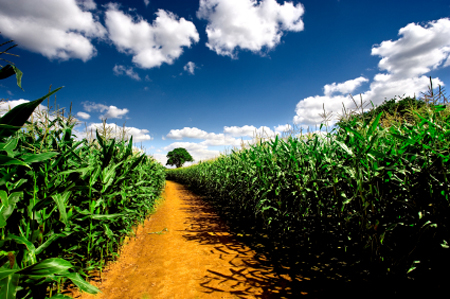 (AgWeb) – This year’s growing conditions have been referred to as a “greenhouse,” and while problem areas exist, chances are prices are headed lower as producers start to bring in a new record-large corn crop.
(AgWeb) – This year’s growing conditions have been referred to as a “greenhouse,” and while problem areas exist, chances are prices are headed lower as producers start to bring in a new record-large corn crop.
The all-time high U.S. corn production occurred last year at 13.9 billion bushels on a yield of 158.8 bu. per acre. The all-time record-large yield, however, occurred in 2009 at 164.7 bu. per acre. USDA’s current forecast for this year’s crop calls for both record production of 13.935 billion bushels and a record yield of 165.3 bu. per acre.
“If the weather forecast for the next two weeks is correct, we are looking at a record crop,” says Dan Basse, president of AgResource in Chicago. “There have been years in which the average yield was 14 to 15% above trend, so we could see an average yield as high as 180 bu. per acre.”
Last year, Arkansas had the highest average corn yield of 189 bu., notes Basse. The question is not whether an average yield of 175 to 180 bu. per acre is possible, but whether Mother Nature will allow it, he adds.
“If you look at crop conditions this year, they are pretty similar to last year, but we planted 3.7 million fewer acres of corn this year,” says Adam Stout, risk management consultant with INTL FCStone in Kansas City. “We’re coming into July with mostly ideal conditions. Last year the dry conditions in the western Corn Belt took the top off yield, but the eastern Corn Belt looked fantastic.”
Drought Not as Big an Issue as Last Year
This year, drought conditions over the major corn-growing states of Minnesota, Iowa and Missouri have rapidly receded, and the weather pattern has turned wet. A month ago Sioux Falls, S.D., was mired in drought, and rainfall was well below normal for the year. As of June 17, Sioux Falls had received 17.95 inches of rain for the year, or 6.5 inches more than normal.
Severe to extreme drought, however, still persists in Kansas and Nebraska, but a burgeoning El Niño could bring wetter-than-normal conditions to the central plains later this summer and early fall, according to Mary Knapp, meteorologist with Kansas State University.
USDA’s Crop Progress report for the week ending June 15 shows that corn conditions are excellent and the crop is emerging at an average pace of 97%, compared to the five-year average of 96%. Only 4% of the nation’s corn was rated poor or very poor, compared with 8% at this time last year.
“I would give a record crop a 40% chance, but that number will slowly start to grow. If July weather is similar to June’s, we are well on our way to a record crop,” says Stout. “I have a hard time getting bearish corn below $4 per bu., though. Demand would pick up considerably if corn were to drop below $4. If I were to pick a low, I’d call it $3.86.”
Basse, however, expects corn prices to drop below $4 per bu., and says a low of $3.50 is not out of the question.




